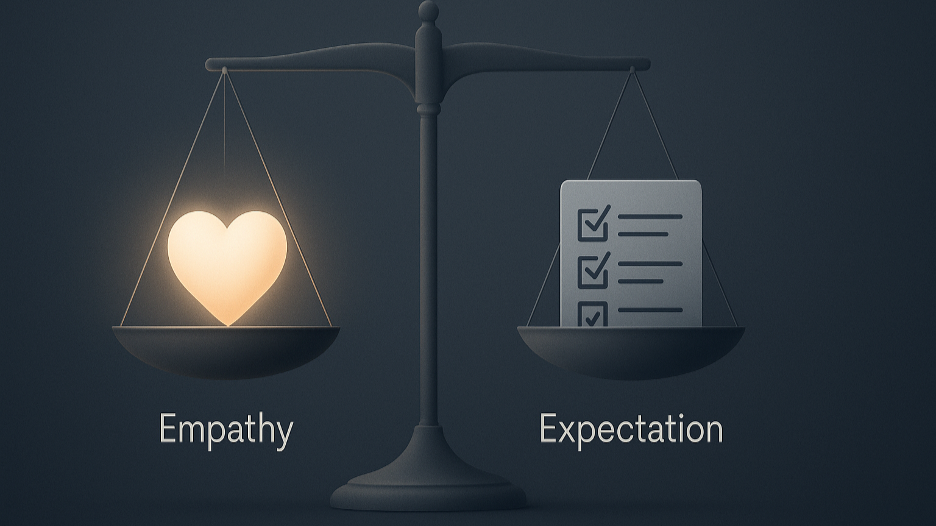Article
Psychological Safety and Creating Open Dialogue
Psychological Safety and Creating Open Dialogue
Good communication is vital for effective functioning of any team. However, if you have ever been on a team where the team leader openly criticizes team members, aggressively interrogates them to pick holes in their ideas, dismisses member’s contributions or plays one off against the other, you have witnessed how a leader can stifle open communication and create an atmosphere where people feel unsafe to say what they really think. A leader can destroy trust and openness by reducing the level of psychological safety and in turn, weakening the overall performance of the team. In the absence of psychological safety, people learn to keep quiet and avoid disagreeing with the leader and are reluctant to be honest and direct about their views, concerns and mistakes. We know from decision-making research that decisions are enhanced when all the facts and all the views of team members are given a fair hearing. However, when the leader has strong views and is unwilling to listen to alternative perspectives, the leader’s biases will go unchallenged and decisions will be less objective and often flawed. Confirmation bias, overconfidence bias, optimism bias, status quo bias and many others have been identified by researchers as the sources of bad decisions that can lead to fatal organizational errors. Team leaders need to learn to be open to and supportive of new ideas, to listen carefully, invite challenges and let the facts win. They need to ask questions to “disconfirm” their own views, opinions and mental models. They need to build the team’s willingness to share information, focus on the facts and engage in open and honest dialogue rather than suppressing open dialogue. Team members need to feel safe, comfortable and encouraged to bring up their concerns, address difficult issues and problems and challenge how the leader, the team or the organization does things.
The importance of psychological safety.
“Psychological safety” is a term created by Harvard researcher Amy Edmondson in the late 1990s. Essentially, it is “a belief that one will not be punished or humiliated for speaking up with ideas, questions, concerns or mistakes.” Edmondson found, to her surprise, that teams that admitted to making many mistakes were more effective than those claiming few mistakes. The reason, she discovered, was that the teams that appeared to be making more mistakes were more likely to admit where they had gone wrong, and were then able to discuss it, fix it, and avoid similar errors in future. But in order to admit and discuss mistakes, conflicts and problems, team members needed to feel safe.
Google’s large-scale study of teamwork in the mid-2010s, code-named “Project Aristotle,” corroborated Edmonson’s work. It found that of five critical factors behind effective teamwork, psychological safety was #1. “Psychological safety refers to an individual’s perception of the consequences of taking an interpersonal risk or a belief that a team is safe for risk taking, in the face of being seen as ignorant, incompetent, negative, or disruptive.”
When there is psychological safety on a team, teammates feel it is okay to admit they’ve made a mistake, or don’t understand something and need it clarified. Team members feel that they can bring up a topic and feel comfortable that they can share their concerns or mistakes without fear of humiliation or retribution. They feel confident that they will not be judged, punished, or embarrassed. A sense of psychological safety sets people free to take risks, to speak their minds and offer their ideas, so it forms a solid basis for open participation and collaboration. It fosters creativity, confidence, and open-mindedness. ‘‘It describes a team climate characterized by interpersonal trust and mutual respect,” Edmondson wrote, “in which people are comfortable being themselves.’’
Call out negative behavior .
On the other hand, it doesn’t mean that “anything goes.” When members exhibit behavior that isn’t collaborative, or in some way is not conducive to a safe, supportive team environment, it is the leader’s responsibility to let the member know that this behavior is unacceptable. Leaders must create an atmosphere where everyone gives candid feedback. This may mean challenging inappropriate comments or aggressive, competitive behavior, either in the group or individually. It is also important to call out behaviors that reflect a “silo mentality,” where members focus on their own self-interest or their group or team’s agenda, rather than the interests of the entire team. Do this as soon as possible after the incident occurs. But be careful and don’t just focus on pointing out the holes in the logic of team members’ suggestions or ideas. In your effort to get to the truth, you may be intimidating a valued team member. Calling out negative behavior is important, but it is equally vital for the team leader to reinforce, recognize, and acknowledge behavior that is supportive and collaborative. “I really liked the way that you did …x.” Team members see and appreciate it when the leader does this.
“In his position it is absolutely critical to build strength and camaraderie among team members. Louis does this VERY well. Not only through his words, but, more importantly, through his actions. When asking for team support, he is first to volunteer his time and effort, and rewards those who help with praise and genuine accolades.”
Treat team members with respect.
It is important that when team members speak, they need to feel that their ideas or views are valued and will be given consideration. Dismissive comments from the leader or other team members shows disrespect. The leader needs to model respect but also be willing to confront members who show disrespect. When team members make a mistake, it is important to avoid judgmentalness or blame and focus on helping them improve or learn. From your side as the leader, show your respect by:
- Valuing the competence and contributions of all team members and functions, and building trust in members’ skills and their ability to do the job assigned to them
- Willingness to give credit to others for their contributions and accomplishments
- Being supportive of calculated risks, and viewing mistakes as opportunities for growth and learning
- Never criticize individuals in team meetings or in other public forums.
- Never be dismissive of the ideas, comments, and contributions of team members
- Never attack team members or allow yourself to engage in frequent outbursts of anger
- Never use language that members may find offensive or insensitive
As the leader, look for ways to foster empathy between team members. This is essential for building bonds of trust and gives people insight into what other team members are thinking and feeling and why they are reacting the way they are. Empathy helps team members relate thoughtfully and compassionately to one another. It is the ability to identify and understand another's situation, thoughts, feelings, concerns and motives. It is the capacity to recognize the concerns other people have, no matter how different from your concerns. It means putting yourself in the other person's shoes or seeing things through someone else's eyes. Sharing information, telling the truth, admitting mistakes, giving and receiving honest feedback, and maintaining confidentiality all contribute to an atmosphere of openness and trust.
Following are key points for establishing and maintaining good communication and open dialogue among team members.
- Team discussions need to be open. Everyone must say what they think and mean what they say. Good ideas and honest sharing of views are the basis for decisions that help the organization get results. Effective dialogue is interactive and requires that all members actively participate.
- Members must be willing to disagree with each other and with the leader, but in a constructive manner. Trust is crucial: members must feel safe to express opinions without fear of attack, humiliation or retribution.
- When both the leader and team members feel free to give each other honest feedback, this helps everyone understand how their strengths and weaknesses are impacting their performance and shows where they might need to adjust their behavior to be more effective.
- Be careful of people’s feelings. Encourage everyone to listen to each other and seek to understand before judging and being understood. Discourage social competitiveness and trying to win debates. By your example, show people how to build on each other’s ideas.
- As the leader, when you express your own ideas and opinions, pay attention to everyone’s reactions to make sure you are not intimidating team members. You need to show them that openly sharing their ideas, perspectives and opinions is both encouraged and respected. Putting a variety of ideas on the table is a vital step in problem solving and decision making. So be sure to invite everyone’s participation in brainstorming sessions, and encourage them to bring up all ideas, even half-formed, intuitive hunches.
- One of the rules of brainstorming is to withhold judgment and criticism until everyone’s ideas have been heard and considered. Brainstorming is about generating as many ideas as possible and creating an atmosphere of unrestrained and spontaneous participation in discussion. Evaluation of ideas comes later. Obviously, some ideas will be better than others, but the leader must get members to think about possibilities rather than constraints, problems or difficulties in implementation. The goal is divergent thinking. Later, convergent thinking will narrow the focus and consider problems, constraints, and practicality.
share this
Related Articles
Related Articles



STAY UP TO DATE
GET PATH'S LATEST
Receive bi-weekly updates from the church, and get a heads up on upcoming events.
Contact Us








